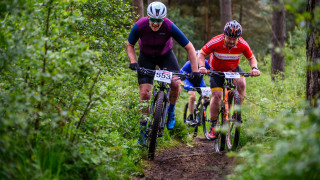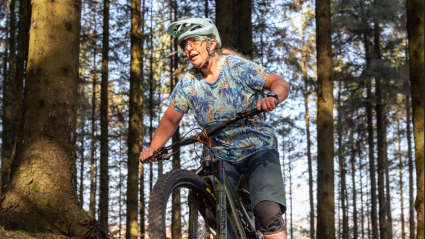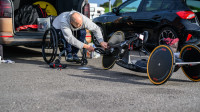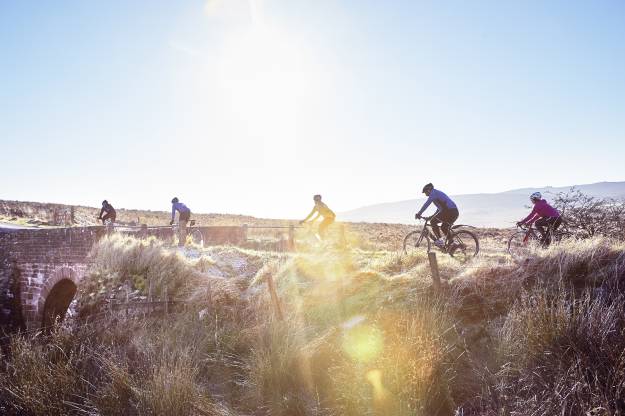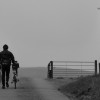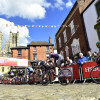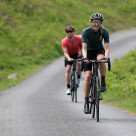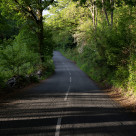Knowledge Level: Intermediate
Many riders struggle on climbs or want to ride them faster. Unfortunately, there are no magic bullets to improve your uphill prowess but, with some dedication and by following these top 10 tips, anyone can ride faster when the road kicks up.
1) Practice
The more hills you climb, the better you will get at them. Throw in different terrains and you've even more to get used to when it comes to finding traction and rhythm.
Our training plans purposely schedule in hill reps and hilly rides to prepare you so don’t avoid these sessions. If you live in a flat part of the country, you might be forced into riding the same climb repeatedly or even mimicking the demands of climbing on anindoor trainer, but this gives you a great way of benchmarking your effort.
2) Gearing
Grinding up a climb in too big a gear is not only inefficient and draining on your energy reserves, it is also slower. Even professional riders use compact chain-sets on mountain stages, so there is certainly no shame in fitting one yourself along with a wide ranging rear cassette.
A relatively short 5-8% gradient climb might be manageable on your current setup at home but, in the Alps or Pyrenees, where that gradient can continue for 20km plus, you might need something lower. If in doubt, always opt for lower gears than you think are necessary.
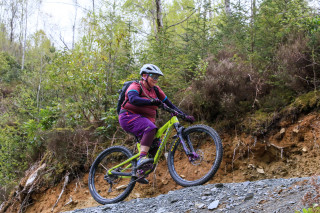
3) Pacing
Some hills are too steep to pace and it is just a case of getting up them. However, on shallower gradients and longer climbs, whether you use heart rate or power, correct pacing is one of the main keys to climbing success.
If you have followed a training plan, you will have tested for and ridden according to either your Functional Threshold Heart Rate (FTHR) or Functional Threshold Power (FTP). The zones these figures allow you to calculate and, having learned how to pace with them in training, are invaluable for pacing long or multiple climbs.
4) Fuelling
On all long rides, whether hilly or flat, correct fuelling before and during is essential. Running low on fuel always feels worse if you are going uphill and, if you haven’t been eating and drinking little and often right from the beginning of your ride, you can literally come to a standstill.
Being able to effectively use and absorb the fuel you take in is linked to pacing and, as you are likely to be working harder and potentially close to your limit on climbs, you have to fuel around them. Always try to take advantage of flats and downhills to fuel up and, if you do have to eat while climbing, be aware that you may have to back your pace off a little.
5) Climbing technique
The phrase 'turning circles' refers to the smooth action of pedalling to transfer power efficiently. And if you ride clipless (using SPD (Shimano Pedalling Dynamics) pedals for example), this also means being able to apply effort to the upstroke.
When you're fatigued on a climb it can be tempting to stomp on the pedals while seated, but by resettling yourself and focusing on form, you can make a big difference.
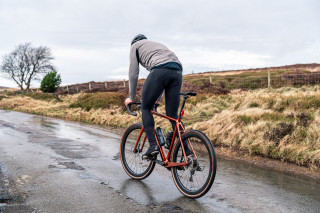
6) Mix things up
On a long climb try breaking up the effort into manageable chunks. So perhaps you change your hand position on the bars when you reach a set lamppost, or ride out of the saddle until a bend in the road.
If you're feeling good, this can also be a good way to incorporate high intensity efforts e.g. by sprinting a section before recovering while still climbing.
7) Standing on the pedals
When you get out of the saddle to climb, consider adding a gear first and think of the transition less as a 'heave' and more as a really active movement. By standing up and doing the first pedal stroke in the new position you are giving yourself a boost with the added body weight and can maintain that feeling of riding fresher for a short while.
8) Practice pushing outside your comfort zone
Similar to the high intensity sprint efforts mentioned above, why not see how high you can go on a Strava leaderboard with some focused efforts? Or take part in a local hill climb? These are often run by clubs with a really friendly atmosphere - plus they will help you to get a feel for how hard you can go when you really have a crack at it. With a timer on, some competition and people to cheer you on, there are always a few extra watts to be found.
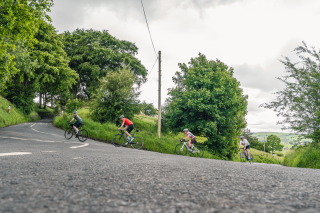
9) Group riding
You will often find in a sportive that groups will fragment on climbs and, as the road kicks up and speeds drop, the aerodynamic benefits of being on a wheel will reduce. You can still get a psychological boost from pacing yourself off a rider in front though and, if you have got a headwind to battle into as well as the gradient, then tucking in behind another rider makes sense.
10) Bike, kit and clothing
It makes sense to try to minimise the weight of your bike and kit but gram shaving can easily turn into a very expensive obsession. If you do want to buy some uphill speed, upgrading your wheels will probably give you the greatest performance gains for your money.
There aren’t necessarily significant weight savings to be made from clothing but, from an energy saving perspective over a long ride, baggy or flapping kit is important to avoid. For example, if you have unzipped your jersey to keep cool on a climb, fasten it up for the descent and any flat sections.

